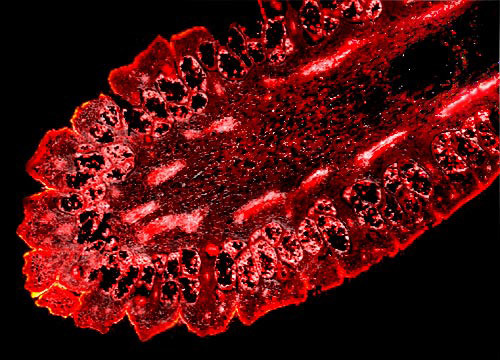
Horsetail
E. arvense produces two types of hollow-jointed stems. The fertile stems, tipped with a spore bearing cone about one inch in length, emerge in early spring and die back soon after the spores are released. The spent shoots are rapidly replaced by sprouting vegetative stems bearing whorls of green, four-angled, leaf-like branches. Both varieties of shoots are maintained by food reserves that are stored in small tubers produced along the horsetails' extensive root-like system (rhizome). This root system is actually an underground horizontal plant stem that typically penetrates deep into the soil. The tenacious rhizome allows horsetails to form dense colonies that can grow to weed-like proportions and create problems in orchards and hayfields with poorly drained soils. Although generally having very little commercial value, one species of coarse, textured horsetail contains a high content of silica and is utilized in abrasive scouring powders.















